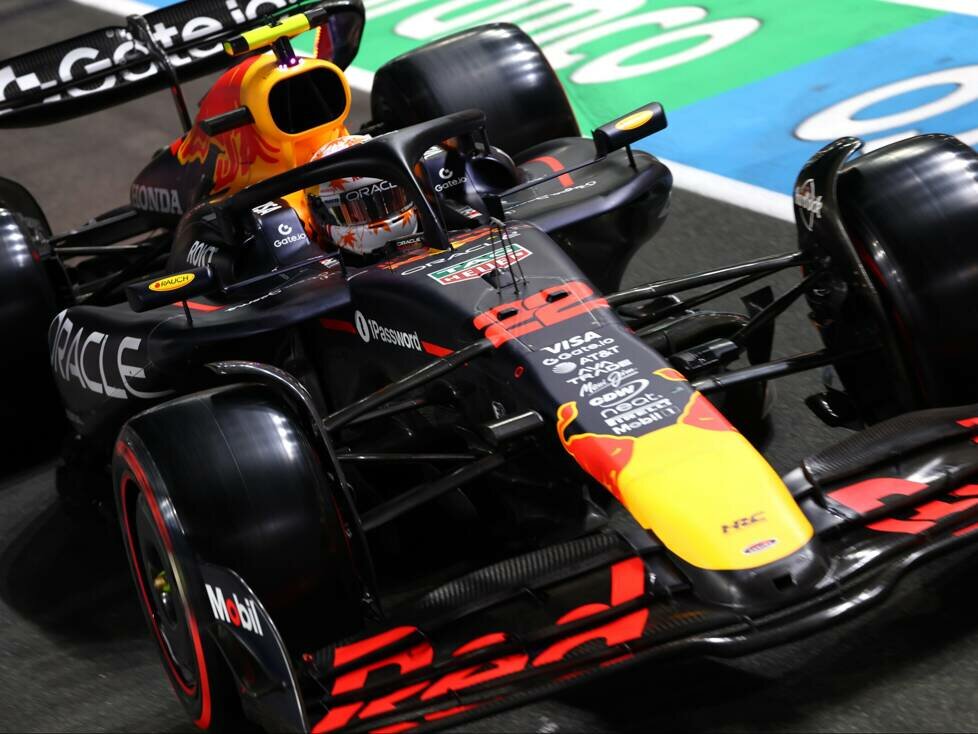What would have happened in Saudi Arabia if Yuki Tsunoda and Pierre Gasly hadn’t crashed? Would the Japanese driver in the Red Bull have scored points?
It’s time for a little thought experiment. Where would Yuki Tsunoda have finished in the Formula 1 race in Jeddah if he hadn’t collided with Pierre Gasly on the first lap? Would the Japanese driver in the Red Bull have had a chance of scoring points in Saudi Arabia? The different tire strategies in the race could give an indication of where Tsunoda would have finished.
After the first safety car in Saudi Arabia, three drivers pitted to change tires: Esteban Ocon, Gabriel Bortoleto, and Jack Doohan started on medium tires, came in early for service, and thus had the chance to finish the race on the hard compound without another stop. To do so, they would have had to conserve their tires for the rest of the race.
Ocon and Bortoleto attempted to do just that, while Doohan came into the pits again on lap 32 to change his tires. None of the three gained an advantage as a result, although they made up places due to the stops and the asynchronous strategy. However, when the other drivers put on fresher tires, they quickly lost the positions they had gained.
Pure theory
Ocon finished in 14th place, while Doohan even managed to pass Bortoleto to secure 18th place. But how would the race have gone for Tsunoda? Could he have continued the race without damage? And if he had, would he have had a chance of scoring points if he had followed the same strategy?
This is based on the tire wear of the hard tires. To construct the best-case scenario, the lap times of Ocon and Bortoleto are used. Tsunoda would have been last at the end of the yellow phase and would have restarted on lap 4. Now the best possible delta between Tsunoda’s lap time and that of Ocon and Bortoleto must be determined.
Based on previous races, Tsunoda would have been at 100.838 percent, while the combination of Ocon and Bortoleto would have been at 101.832 percent. Tsunoda’s lap times still carry weight in the Racing Bulls car, but this discrepancy may reflect the reduced pace he would have had if he had had to fight his way through the field.
The theoretical Tsunoda run
Between laps 21 and 27, Bortoleto, who was overtaken, and Ocon also lost time to the drivers with fresher tires, the latter slightly less. These figures are not smoothed out in the theoretical Tsunoda case, as the Japanese driver would also have been under pressure from other drivers.
He would have been at the back of the field and would have had to make up time after the incident in turn 4 to catch up. Bortoleto was half a second behind Ocon at the restart, and this gap is also applied to Tsunoda at the back of the field.
Like the other drivers on hard tires, Tsunoda would have needed a few laps to get the tires up to temperature. Therefore, lap times of 1:37.128 and 1:35.791 are used for the first two laps.
Tsunoda would have had a chance to score points
He would then have been able to consistently drive 1:34 times, with the exception of a few 1:35 times in traffic. By lap 33, he would have made it into the high 1:33 times. That would have put him over a second slower per lap than his teammate Max Verstappen. In the end, he would have been back in the 1:34s due to tire wear.
Taking into account the time behind the safety car and Tsunoda’s theoretical lap times, the Japanese driver would have finished eighth with a total time of one hour, 21 minutes, and 50.586 seconds. He would have been ahead of Carlos Sainz and Alex Albon, but five seconds behind Lewis Hamilton in the Ferrari.
This is a very optimistic calculation, even if the wear and tear on Ocon and Bortoleto’s tires was taken into account. Had Tsunoda survived the accident without damage, he might have been able to finish in the points on hard tires – if he hadn’t been held up too much in traffic. It would have been a kind of Hail Mary to limit the damage, but theoretically Tsunoda could have made it into the top 10.





